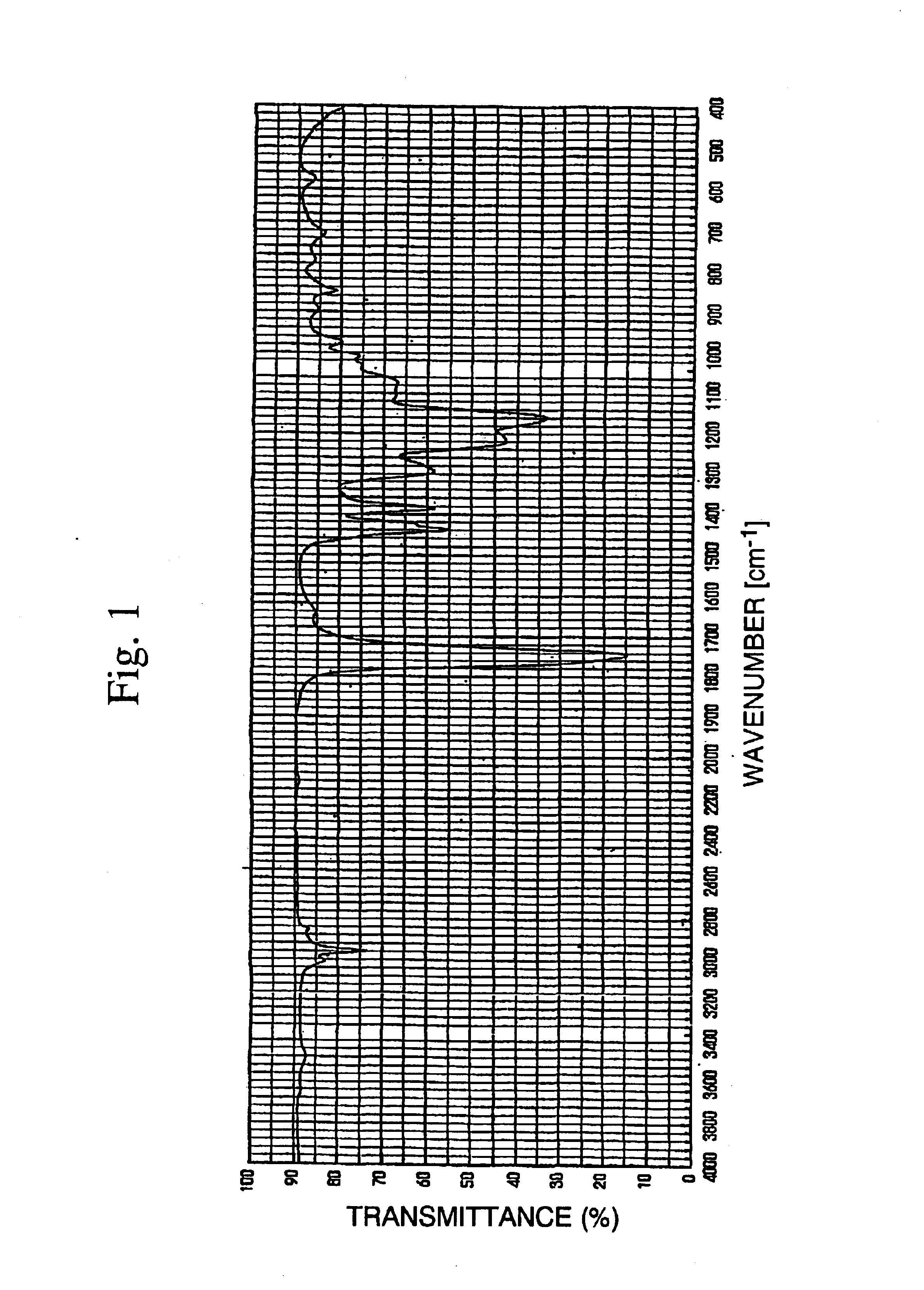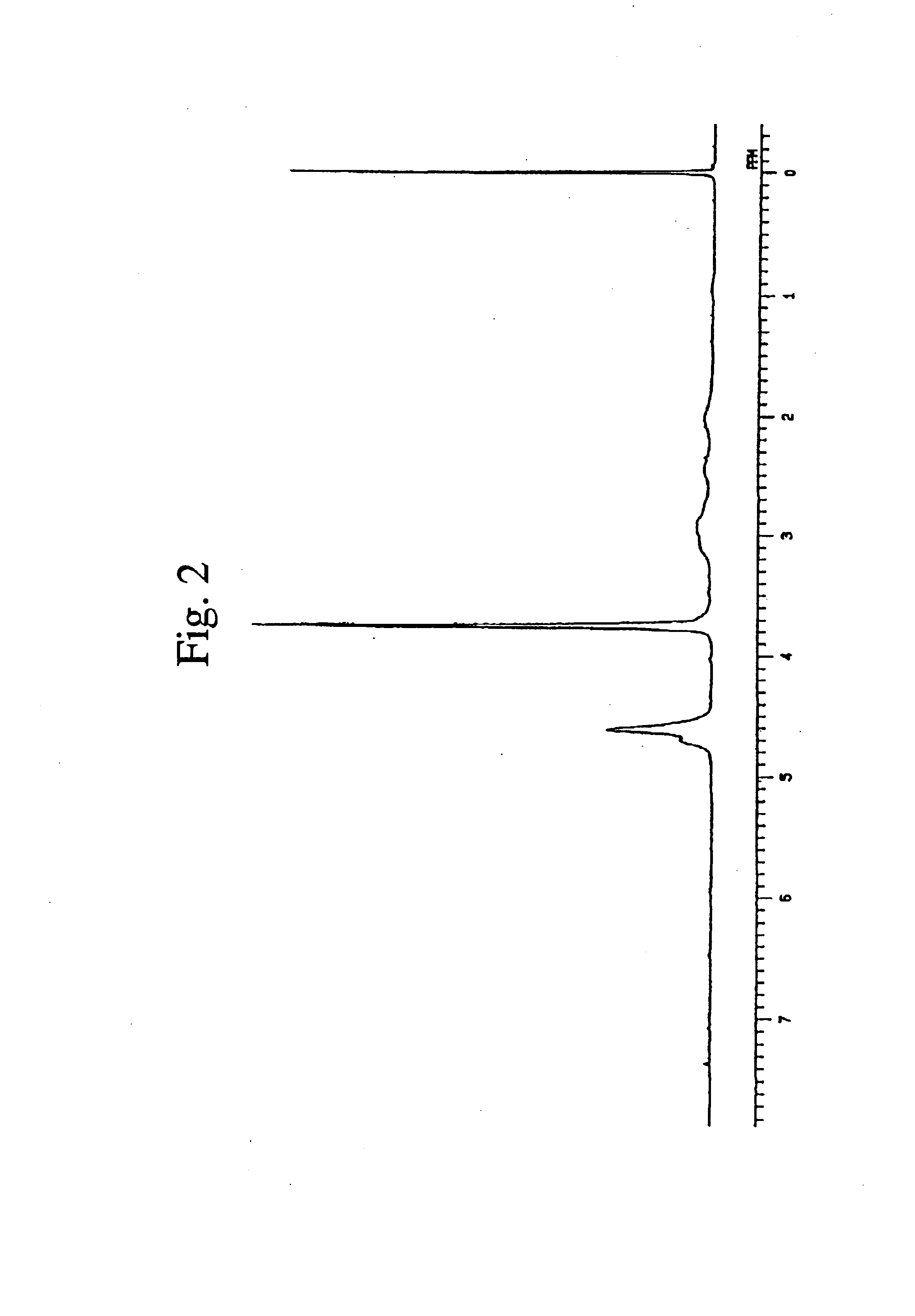Antifouling coating composition and novel resin
a coating composition and novel technology, applied in the field of antifouling coating composition and novel resin, can solve the problems of reducing the speed and fuel efficiency of the vessel, affecting the appearance and function, and requiring a large amount of labor to remove aquatic organisms from the vessel bottom, and achieve excellent antifouling properties and excellent coating film strength
- Summary
- Abstract
- Description
- Claims
- Application Information
AI Technical Summary
Benefits of technology
Problems solved by technology
Method used
Image
Examples
example 1
Preparation of Vinyl Polymer
[0184]In a glass reaction vessel equipped with an air cooling tube, 10.0 parts of BMCMI, 0.30 parts of di-tert-butyl peroxide (DTBPO), 7.0 parts of n-butyl acetate (BAc) and 3.0 parts of xylene (Xy) were charged and sufficiently mixed, and then the reaction vessel was dipped in an oil bath maintained at 120° C. and heating was started. After 12 hours, 24 hours and 36 hours since the start of heating, 0.1 parts of DTBPO was added. The polymerization was carried out by heating for 48 hours in total to obtain a polymer solution. To the resulting polymer solution, 40 parts of methanol was added, followed by sufficient mixing and further extraction of methanol-soluble fraction. The operation of extracting the soluble fraction using 40 parts of methanol was conducted three times to obtain a highly viscous liquid residue. The volatile material was removed from the liquid residue under reduced pressure to obtain 7.82 parts of a homopolymer of BMCMI (yield: 78.2%)...
example 2
Preparation of Vinyl Polymer
[0185]In the same manner as in Example 1, except that 10 parts of BECMI was used in place of 10 parts of BMCMI, the polymerization, the operation of isolating the polymer and the removal of the volatile material were conducted to obtain 7.14 parts of a homopolymer of BECMI (yield: 71.4%) as a solid with adherent nature. The resulting resin had a weight-average molecular weight (Mw) of 18,300. The IR spectrum is shown in FIGS. 3 and 1H-NMR spectrum is shown in FIG. 4.
example 3
Preparation of Vinyl Polymer
[0186]In the same reaction vessel as in Example 1, 5 parts of BMCMI, 5 parts of methyl acrylate (MA), 0.3 parts of DTBPO, 2 parts of Xy, 2 parts of propylene glycol monomethyl ether (PGME) and 6 parts of BAc were charged and sufficiently mixed, and then the reaction vessel was dipped in an oil bath maintained at 120° C. and the polymerization was conducted by heating for 16 hours. A solution obtained by dissolving the resulting copolymer solution in 20 parts of tetrahydrofuran (THF) was poured into 400 parts of methanol to precipitate the copolymer. The precipitated copolymer was isolated by filtration and dried under reduced pressure for one day to obtain 8.46 parts of a copolymer of BMCMI and MA (yield: 84.6%) as a white powder. The resulting copolymer had Mw of 25,500 and contained 24.8 mol % of a repeating unit derived from BMCMI. The IR spectrum is shown in FIG. 5 and 1H-NMR spectrum is shown in FIG. 6.
PUM
| Property | Measurement | Unit |
|---|---|---|
| temperature | aaaaa | aaaaa |
| temperature | aaaaa | aaaaa |
| thickness | aaaaa | aaaaa |
Abstract
Description
Claims
Application Information
 Login to View More
Login to View More - R&D
- Intellectual Property
- Life Sciences
- Materials
- Tech Scout
- Unparalleled Data Quality
- Higher Quality Content
- 60% Fewer Hallucinations
Browse by: Latest US Patents, China's latest patents, Technical Efficacy Thesaurus, Application Domain, Technology Topic, Popular Technical Reports.
© 2025 PatSnap. All rights reserved.Legal|Privacy policy|Modern Slavery Act Transparency Statement|Sitemap|About US| Contact US: help@patsnap.com



